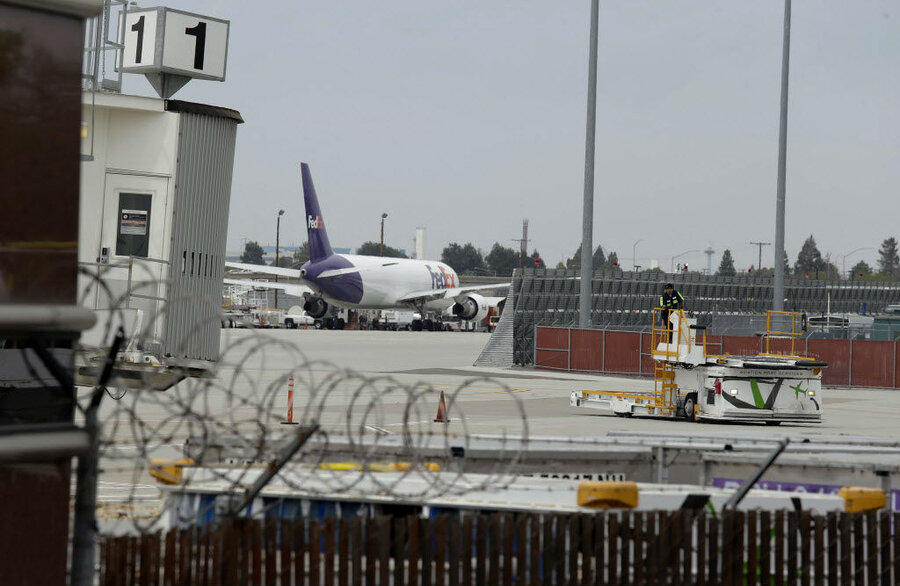Teen stowaway's adventure raises questions about airport security
The shocking tale of a teen stowaway who managed to hop an airport perimeter fence, cross the tarmac, and hitch a ride to Maui, Hawaii, in the wheel well of a plane is raising questions about holes in airport security.
"If a teenager who does not appear to have any nefarious intent can find himself onto a tarmac and into an airliner, I am concerned about a more sophisticated plotting individual and what [terrorists] could do," Rep. Eric Swalwell (D) from California told the Wall Street Journal.
The Transportation Security Administration is responsible for security inside the airport, but coverage of the perimeter falls under the jurisdiction of local and federal law enforcement.
While tarmacs are much more secure than they were in decades past, when well-wishers could park on the tarmac to see friends and family off on their flights, they are not nearly as tightly patrolled as the interior of airports.
Fences surrounding airport tarmacs do a good job of keeping animals off the runway, but are not necessarily designed to keep people out. Portions of the fence surrounding Mineta San Jose International Airport are falling down, The New York Times reports.
At Mineta, video surveillance of the tarmac supplements security sweeps conducted by Segway-riding police officers and German shepherds. A subsequent review of video footage showed the boy crossing the tarmac and climbing up into the wheel well, but no one noticed at the time.
“If he was on the camera, why wasn’t there a response? Was no one watching the monitors?” RANDCorp. security expert Brian Jenkins told the Los Angeles Times. “The first question will be, gee, the cameras work, the response didn’t. Was it just missed and they went back and searched through that time frame and, oops, there he is?”
Another airport security expert, Richard Bloom of Embry-Riddle Aeronautical University told the Associated Press that even video surveillance is subject to human error.
Despite great promise, "sometimes the actual results are quite underwhelming when it gets to the real world, where people are fatigued, people are preoccupied," Mr. Bloom told the Associated Press. "There's no way to guarantee security, even if you had one person per video screen."
San Jose airport spokeswoman Rosemary Barnes told AP that the boy crossed the tarmac while it was still dark outside, which might have made him more difficult to spot for security personal monitoring the screens. The flight took off around 8 a.m., 90 minutes after sunrise.
Once on the tarmac, climbing up into the wheel well is not that difficult, Jose Wolfman Guillen, a ground operations coordinator at Chicago’s O’Hare International Airport told CNN.
"You can grab onto the struts and landing gear assembly kind of like a ladder, and you just jump on the tire and climb into the wheel well," he said.
However, once inside the well, a stowaway faces some grave dangers.
The outside temperature at 38,000 feet is about minus 85 degrees Fahrenheit, though the wheel well interior is likely slightly warmer. Officials believe that the boy likely passed out from lack of oxygen soon after the plane took off and did not wake up until an hour after landing in Maui.
“I just assumed that everybody who did this died,” said Richard Marchi, an airport consultant told The New York Times.
Most do, according to the Federal Aviation Administration.
Out of 105 known stowaway attempts since 1947, only 25 people have survived, according to the FAA.







